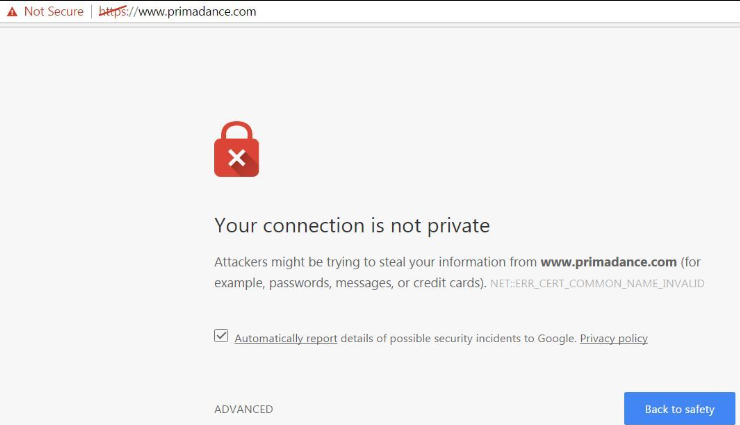Which of the Following Indicates a Website Is Not Secure?
In today's digital age, website security is of utmost importance. Users want to ensure that their personal information and online activities are protected when visiting websites. One key factor in determining website security is the presence or absence of certain indicators. In this article, we will explore the various signs that indicate a website is not secure, allowing users to make informed decisions when browsing the web.

A website is not secure
1. HTTP Instead of HTTPS
One clear indication that a website is not secure is if it uses HTTP instead of HTTPS.
HTTP stands for Hypertext Transfer Protocol, while HTTPS stands for Hypertext Transfer Protocol Secure.
The "S" in HTTPS signifies that the website has an added layer of encryption to protect data transmitted between the user's browser and the website's server.
Websites that only use HTTP are more vulnerable to unauthorized access and data breaches.
2. Missing Padlock Icon
When visiting a secure website, users often see a padlock icon in the address bar of their browser. This padlock indicates that the connection to the website is encrypted and secure. If a website lacks this padlock icon, it is a clear indication that the website may not be secure. Users should exercise caution when providing personal information or making online transactions on such websites.
3. Browser Warnings
Modern web browsers have built-in security features that detect potentially unsafe websites. If a website is flagged as not secure, the browser will display a warning message to alert the user. These warnings are based on factors such as outdated security certificates, malicious content, or suspicious activity. Users should take these warnings seriously and avoid interacting with websites that are deemed insecure by their browsers.
4. Untrusted SSL Certificate
An SSL certificate is an essential component of website security. It validates the identity of the website and establishes an encrypted connection. When a website's SSL certificate is expired, invalid, or issued by an untrusted authority, it raises concerns about the website's security. Browsers often display warnings or error messages in such cases, indicating that the website's SSL certificate cannot be trusted.
5. Lack of Privacy Policy or Terms of Service
A reputable and secure website typically includes a privacy policy and terms of service.
These documents outline how the website collects, uses, and protects user data.
If a website lacks these essential legal documents, it may be an indication that the website does not prioritize user privacy or adhere to industry-standard security practices.
Users should exercise caution when sharing personal information on such websites.

Indicates a website is not secure
Ensuring website security is crucial for maintaining user trust and protecting sensitive information. By understanding the indicators that suggest a website is not secure, users can make informed decisions when browsing the internet. The absence of HTTPS, missing padlock icons, browser warnings, untrusted SSL certificates, and the lack of privacy policies or terms of service are all signs that a website may not be secure. It is essential for users to prioritize their online safety and only interact with websites that demonstrate a commitment to security and data protection.